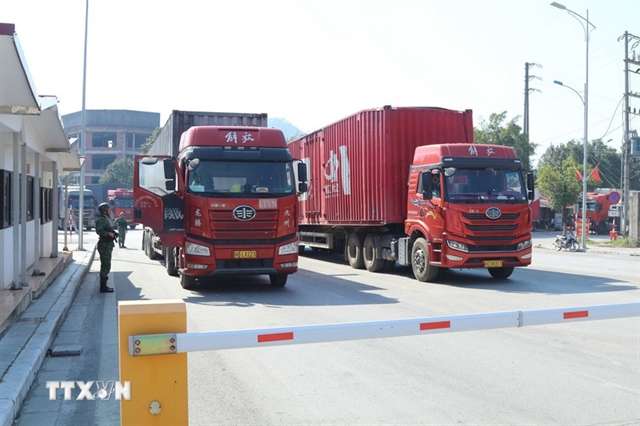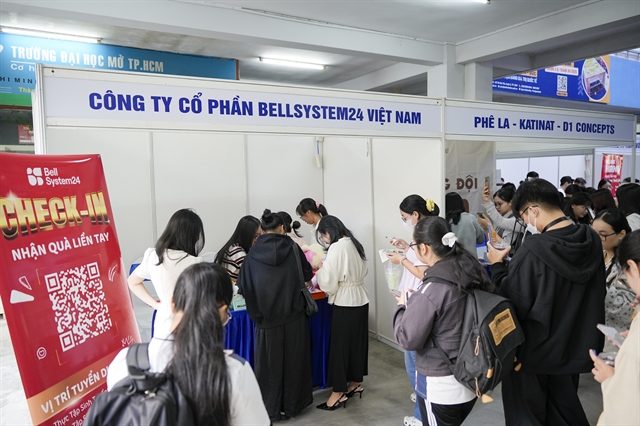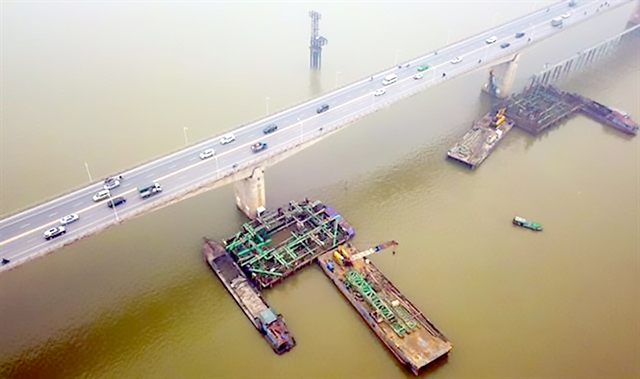 Economy
Economy

Analyst’s Pick: Besides making all-out efforts to have better preparation, heads of ministries and localities should be free of wariness and dare to take risks.

|
| Vĩnh Tuy 2 Bridge under construction. Public investment, especially in infrastructure, is essential to create a breakthrough and boost economic recovery. VNA/VNS Photo |
Võ Trí Thành*
For developing countries like Việt Nam, public investment is an important part of aggregate demand and has long been perceived as a catalyst for growth, as it may have spill-over impacts on many other sectors. Public investment has crowding-in effects on domestic and foreign investment, demand stimulation and employment creation.
In the post-pandemic period, public investment, especially in infrastructure, is even more essential to create a breakthrough and boost economic recovery.
However, Việt Nam is facing a paradox. Despite the great demand for infrastructure to reduce logistic costs and improve connectivity, many sectors like education, the environment, and healthcare urgently need capital to address pressing issues, and public investment capital has been disbursed at a snail's pace.
In a Government report sent to the National Assembly on the "Results of the implementation of the 2022 public investment plan and the public investment plan for 2023", the disbursement of public investment in nine months of the whole country reached 46.70 per cent of the plan assigned by the Prime Minister, a slight decrease compared to the same period in 2021 (47.38 per cent).
Even recently, a series of ministries, sectors and localities have petitioned to 'return' the allocated capital to the State budget as they have been unable to disburse.
The Ministry of Labour, Invalids and Social Affairs has asked to return nearly VNĐ173.2 billion (US$), equivalent to 26 per cent of the total capital allocated. The Ministry of Education and Training has asked for a reduction of VNĐ589.5 billion.
Hà Nội proposed to reduce the Official Development Assistance (ODA) capital assigned by more than VNĐ2.2 trillion from the initial plan due to obstacles in implementing many ODA projects.
In the first eight months of this year, 17 ministries and local authorities returned nearly VNĐ7 trillion of ODA to the Government.

|
| Expert Võ Trí Thành. |
According to the Ministry of Planning and Investment, from 2020 until now, there has been a situation where ministries, central agencies and localities have written requests to 'return' capital from the central budget they were allocated but cannot use, especially ODA capital. This amount of capital has been increasing over the years, with VNĐ14 trillion in 2020 and over VNĐ20 trillion in 2021.
Under current regulations though, there is no 'returning' capital concept. In essence, this is adjusting the annual public investment capital plan according to the Law on Public Investment provisions.
However, as the total annual capital plan approved by the National Assembly cannot be changed, so a decrease in the capital in one sector must be "compensated" by an increase in another sector.
The slow disbursement, leading to the redundancy in capital allocated as mentioned above, is attributed to subjective and objective factors.
Specifically, in 2022, there are some objective reasons, such as the complicated developments of the COVID-19 pandemic, which hampered project progress, and the soaring price of raw materials, which made many contractors work perfunctorily while they waited for price adjustments.
However, there are subjective reasons that have been lingering for years. They could be better quality of project preparation activities, slow land clearance, limited capacities of investors/contractors, and the lack of drastic direction by authorities. Moreover, as a matter of business cycle, projects are often sped up in the ending months of the year, which is also the consequence of the fact that there needs to be synchronisation between the project preparation and detailed schedule delivery.
Besides, the approved medium-term investment plan, a top-down decision process, also led to a mismatch between the capital supply and the demand for investment capital of ministries and localities.
The approval process starts with the National Assembly before going to the Office of the Prime Minister, the Ministry of Planning and Investment, and, ultimately, implementing ministries and agencies.
The delay in the procedures to allocate and transfer funds also contribute to the sluggish disbursements as it creates a time gap between the project implementation and capital allocation.
Major obstacles related to institutions and policies are also hindering the disbursement process. Especially in the case of ODA capital, there needs to be more harmonisation between the domestic regulations and procedures set out by lending countries.
The lack of synchronisation and consistency among legal regulations makes officials and heads of ministries and localities feel insecure. They are afraid of making mistakes and afraid of responsibility.
Although the Politburo has issued a conclusion on the mechanism to protect cadres who dare to think, do, and make breakthroughs for common interests, this right policy has yet to be specified in legal documents. That's why officials only work with wariness and do not dare to create a breakthrough.
On the other hand, several localities report very good performances in public investment disbursement. They said that the most important lesson is to focus attention and efforts on a smaller number of projects instead of spending on too many at once.
For example, Thái Nguyên Province has selected nine using the State budget, such as the route connecting Bắc Giang, Thái Nguyên, Vĩnh Phúc, and Tuyên Quang with a total investment of about $260 million.
Quảng Ninh Province focuses on ten key projects that are driving forces for development with a total capital of about $1.74 billion. These include the Vân Đồn-Móng Cái expressway ($304.3 million) and a new road along the river connecting the Hạ Long-Hải Phòng expressway with Quảng Yên Town and Đông Triều Town ($391.3 million).
In 2023, growth-driving factors such as consumption, exportation and tourism are expected to be negatively affected by global uncertainties, inflation pressure, and the risk of world economic recession. Therefore, it's imperative to boost public investment disbursement.
To do so, the most important thing is to review and perfect legal regulations synchronously and consistently.
Besides making all-out efforts to have better preparation, heads of ministries and localities should be free of wariness and dare to take risks. We have commitments and direction from the Party and Government to protect those daring to think and daring to do. Still, more importantly, the commitments must be institutionalised, becoming legal regulations.
As we live in a constantly changing world with unpredictable events, a risk-accepting framework should also be built. VNS
*Võ Trí Thành is a former vice-president of the Central Institute for Economic Management (CIEM) and a member of the National Financial and Monetary Policy Advisory Council. The holder of a doctorate in economics from the Australian National University, Thanh mainly undertakes research and provides consultation on issues related to macroeconomic policies, trade liberalisation and international economic integration. Other areas of interest include institutional reforms and financial systems.




